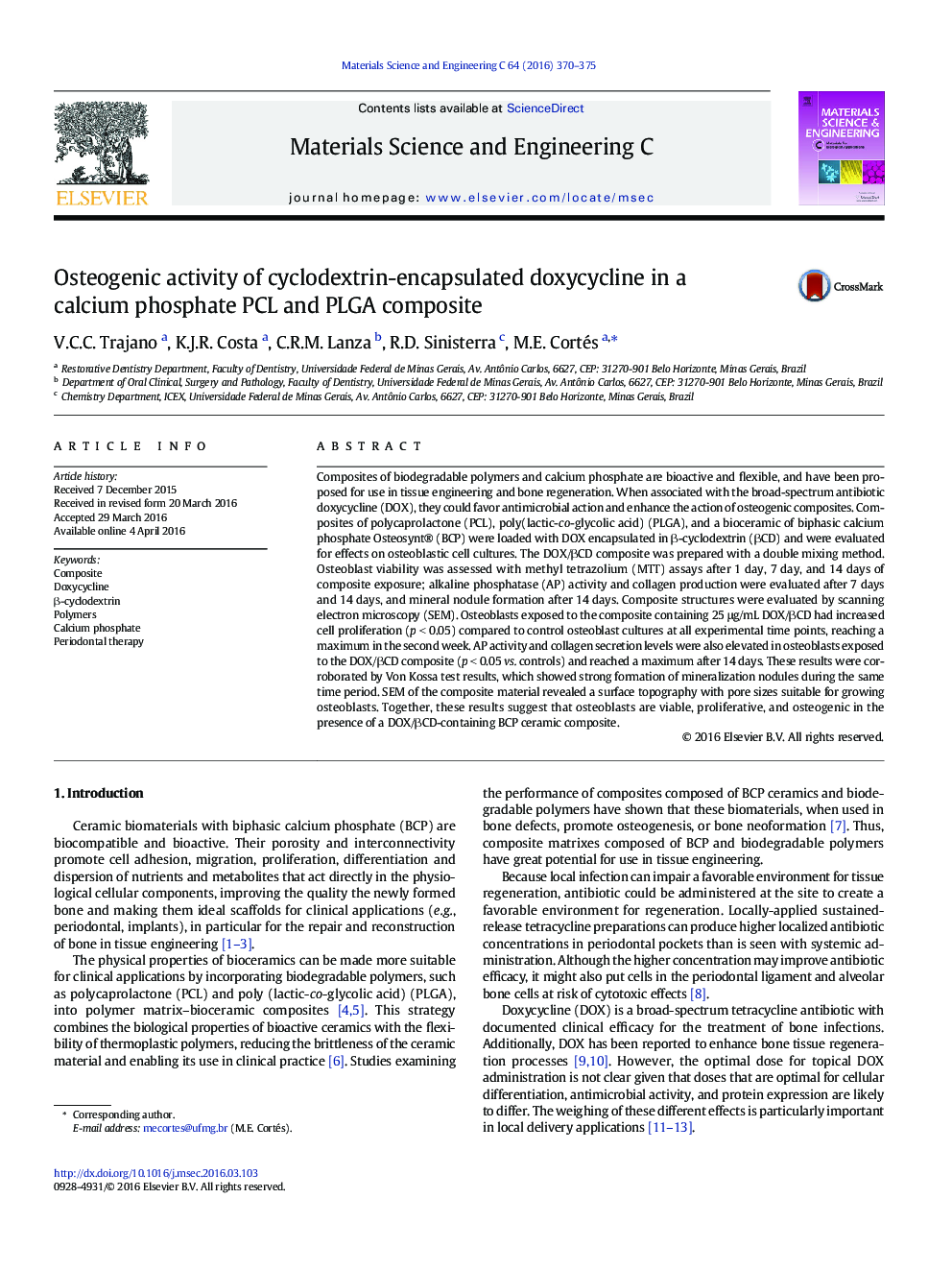| کد مقاله | کد نشریه | سال انتشار | مقاله انگلیسی | نسخه تمام متن |
|---|---|---|---|---|
| 1427972 | 1509157 | 2016 | 6 صفحه PDF | دانلود رایگان |
• Doxycycline encapsulated in β-cyclodextrin was incorpored into a polycaprolactone - poly(lactic-co-glycolic acid) - calcium phosphate
• Composite’s scaffold carrying doxycycline-β-cyclodextrin supramolecular complex favored osteogenesis in vitro
• Doxycycline encapsulated in β-cyclodextrin in polymeric-bioceramic composite has osteogenic potential for engineering tissue application
Composites of biodegradable polymers and calcium phosphate are bioactive and flexible, and have been proposed for use in tissue engineering and bone regeneration. When associated with the broad-spectrum antibiotic doxycycline (DOX), they could favor antimicrobial action and enhance the action of osteogenic composites. Composites of polycaprolactone (PCL), poly(lactic-co-glycolic acid) (PLGA), and a bioceramic of biphasic calcium phosphate Osteosynt® (BCP) were loaded with DOX encapsulated in β-cyclodextrin (βCD) and were evaluated for effects on osteoblastic cell cultures. The DOX/βCD composite was prepared with a double mixing method. Osteoblast viability was assessed with methyl tetrazolium (MTT) assays after 1 day, 7 day, and 14 days of composite exposure; alkaline phosphatase (AP) activity and collagen production were evaluated after 7 days and 14 days, and mineral nodule formation after 14 days. Composite structures were evaluated by scanning electron microscopy (SEM). Osteoblasts exposed to the composite containing 25 μg/mL DOX/βCD had increased cell proliferation (p < 0.05) compared to control osteoblast cultures at all experimental time points, reaching a maximum in the second week. AP activity and collagen secretion levels were also elevated in osteoblasts exposed to the DOX/βCD composite (p < 0.05 vs. controls) and reached a maximum after 14 days. These results were corroborated by Von Kossa test results, which showed strong formation of mineralization nodules during the same time period. SEM of the composite material revealed a surface topography with pore sizes suitable for growing osteoblasts. Together, these results suggest that osteoblasts are viable, proliferative, and osteogenic in the presence of a DOX/βCD-containing BCP ceramic composite.
Journal: Materials Science and Engineering: C - Volume 64, 1 July 2016, Pages 370–375
